There’s a common myth that content marketing doesn’t move revenue. If that were true, none of our companies would be here today.
Content marketing is essential to brand longevity—and it’s how we’ve scaled multiple businesses from zero to steady sales.
If you want compounding, sustainable traffic and pipeline without burning cash on ads, content marketing is your best lever.
At its core, it’s straightforward:
Create genuinely useful content for a clearly defined audience—and put it where they already spend time.
If you’re consistently creating and distributing content, you’re off to a strong start. But if results feel flat, the issue is usually strategy mismatch, not effort.
So if you’re asking, “We’re publishing—why aren’t we selling?” this guide is for you.
We see this constantly in consulting: great execution, fuzzy strategy. If that’s you, read closely.
Publishing for the sake of publishing won’t fix revenue gaps.
Yes, content can serve many jobs. Most teams use it to:
- generate qualified leads
- acquire new customers
- increase brand and problem awareness
- build credibility and authority
- engage and educate an audience
All vital—yet you also need content that directly drives purchases.
That’s why you’re in business, right? Revenue funds everything else.
Below we’ll show the specific content to produce so your entire program—traffic, email, social, SEO—funnels into measurable sales.
Some formats will overlap with what you already publish. Others will be new additions built for conversion.
If you’re getting healthy traffic but struggling to convert visitors into customers, this walkthrough will help you turn attention into revenue.
Let’s dive in.
1. Understand how the conversion funnel works
Before you can ship relevant, high-converting content, lock in the conversion funnel fundamentals.
Different sources visualize it differently, and details will vary by industry and model, but the core stages remain consistent.
Most funnels break into three stages you’ll recognize:
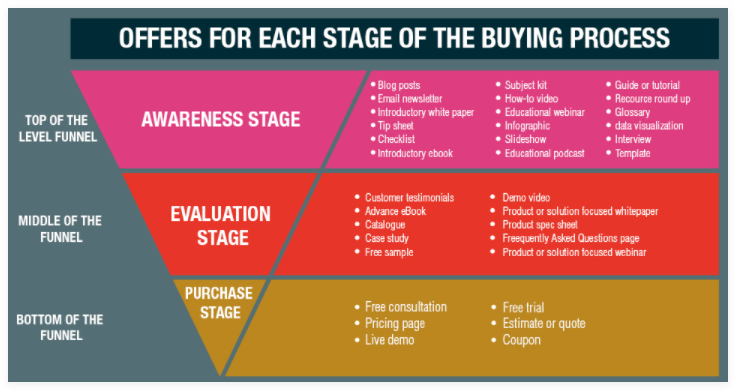
The top of the funnel is awareness. Prospects discover your brand while researching problems, comparing options, or seeking opinions.
Once they know you, they enter the middle—evaluation. They’re validating whether your solution fits their specific use case, constraints, and timeline.
Finally, at the bottom, they’re ready to convert—purchase, book, subscribe, or request a quote.
When you’re creating content to generate sales, prioritize bottom-of-funnel (BoFu) assets.
BoFu content makes your value proposition unmistakable. It clearly shows why you’re the best fit versus alternatives.
Educate prospects on what life looks like as a customer: outcomes, onboarding, time-to-value, support, and guarantees.
Effective BoFu offers include live demos, self-serve product tours, free trials, consultations, interactive calculators, transparent pricing, quotes, and limited-time bonuses—anything that reduces friction and motivates action.
Once you understand the funnel—especially the bottom—you can realign your editorial calendar around assets that close deals.
This applies whether you sell to B2C or B2B—you’ll still map content to the same three stages.
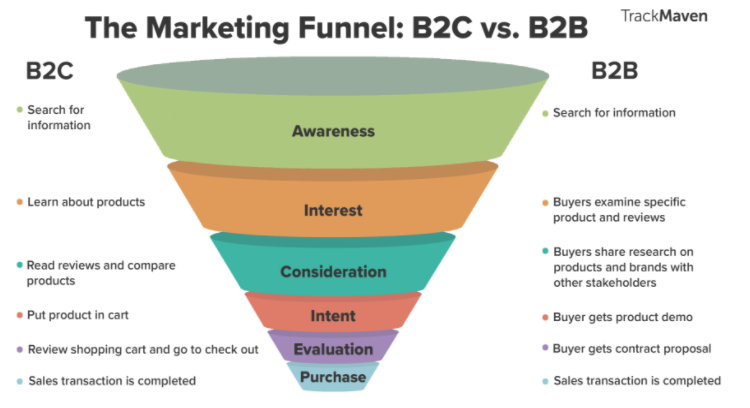
Yes, the details differ by motion and price point, but the structure holds—and your content should, too.
Action step: audit your last 20 pieces. Tag each as Top/Middle/Bottom. If BoFu is under 30%, you’re likely underperforming on revenue.
2. Create a customer journey map
Journey maps go beyond the funnel to document what happens after the sale—where retention and expansion live.
You’ll still include awareness and consideration, but you’ll also model onboarding, activation, adoption, renewal, and advocacy as part of your retention strategy.
Study customer behavior after purchase: time-to-first-value, common blockers, support themes, and features that correlate with renewals and upgrades.
New acquisition is great, but profitable growth comes from keeping and expanding customers you already have.
Map post-purchase content to each moment: onboarding checklists, quick-start videos, “how we measure success” guides, and use-case playbooks that turn buyers into power users.
When you think like a customer, your content naturally becomes more relevant—and more profitable.
3. Track leads and conversions
Where do your best leads originate?
If you don’t know, you’re flying blind—and your content will miss the mark.
Attribution shows you which topics, channels, and offers correlate with purchases—so you can double down on what works.
Because so much of the journey spans digital touchpoints, you can capture the path with basic tracking.
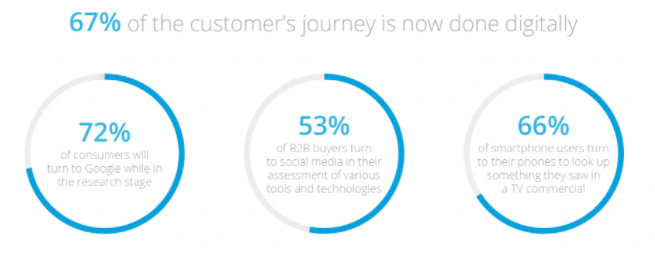
Start with UTM parameters to tag every external link you control.
If UTMs are new to you, think of them as extra query strings added to your URLs so analytics tools can identify the source, medium, and campaign.
When you click a promoted link and the URL looks long and complex—even if it lands on a homepage—that’s UTMs in action.
UTMs tell you if a lead came from Meta ads, LinkedIn posts, Google Ads, a creator partnership, or your newsletter—down to the specific post or ad set.
Create consistent tags per channel and per asset, so you can see which exact piece pulled its weight.
Then roll up results by theme and intent to understand which ideas actually sell.
You can generate tagged links with the free Campaign URL Builder (works with GA4 and supports the standard utm_source, utm_medium, and utm_campaign parameters).
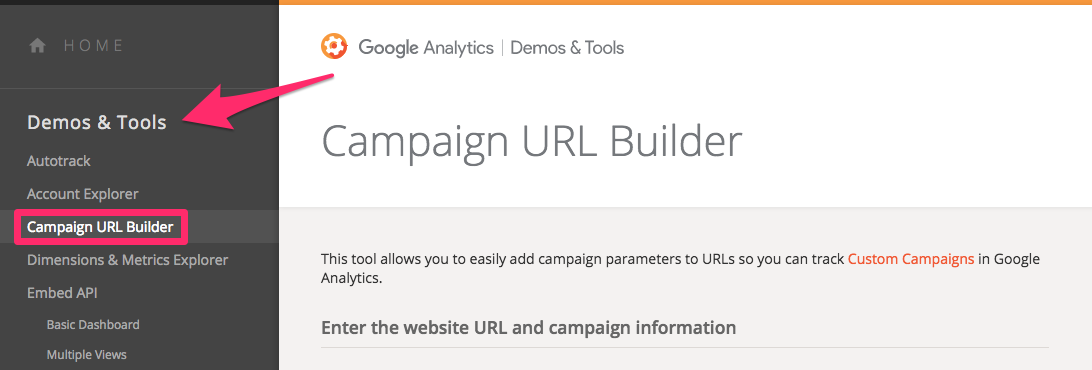
Head to “Demos & Tools,” choose “Campaign URL Builder,” and tag every off-site link you share. You can also review Google’s GA4 docs on URL builders when you need specifics.
UTMs also let you measure ROI accurately by campaign—so spend migrates toward content that closes.
Be meticulous with naming conventions to avoid messy reports and lost insights.
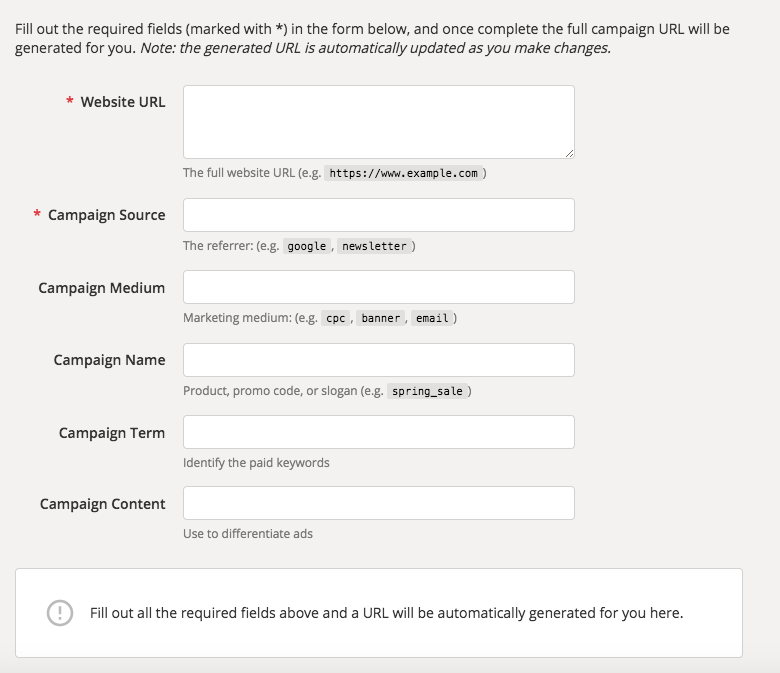
Once your links are tagged, your analytics will show exactly which topics, formats, and channels produce pipeline—not just pageviews.
We’ll stay focused on sales content below, but don’t skip this: without tracking, you can’t prioritize what works.
4. Promote diverse ads on social media
Now pressure-test your hypotheses with real spend. You’ve set up UTMs—time to learn which creative actually converts.
Paid social is perfect for structured testing across audiences, messages, and formats.
Run multiple creative angles simultaneously: product demos, benefit-forward carousels, problem–solution videos, testimonial clips, and offer-based ads.
Start with a clear hypothesis: “Feature-driven demo videos will convert higher than generic tips” or “Comparison ads will beat single-product ads for high-intent audiences.”
Keep each campaign distinct so results are interpretable by message, asset, and audience.
Don’t waste budget on off-topic ads, but do eliminate weak concepts quickly. Relevancy wins.
Use your UTM framework to identify top-performing combinations by platform and creative type.
Then refuel the content calendar with winners—turning proven ads into on-site BoFu pages, one-pagers, and sales enablement assets.
5. Develop a customer persona
With performance data in hand, build (or refine) detailed customer personas to sharpen positioning and conversion.
Personas go deeper than journey maps by codifying motivations, objections, success criteria, and decision triggers.
Use them to tune topics, CTAs, and offers—not just copy.
When defining personas, capture factors like:
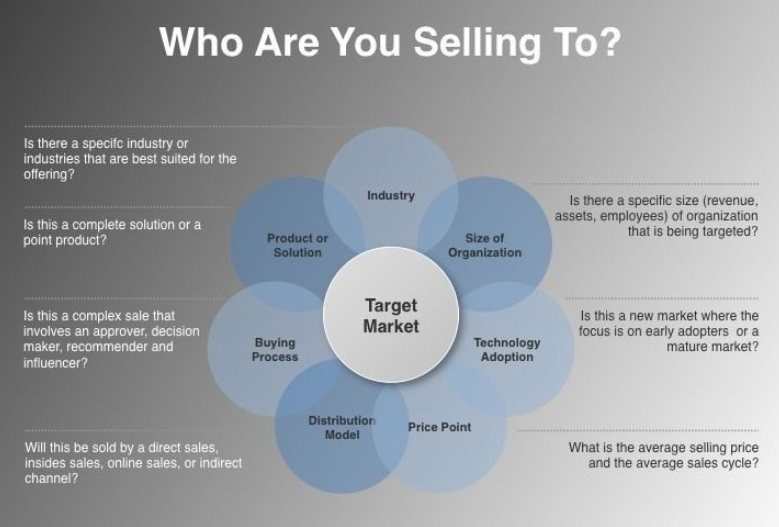
Each persona represents a segment of your broader market with distinct needs and buying triggers.
Plan on creating several personas if you sell across roles, industries, or company sizes—then map content to each.
The result: a content strategy that feels 1:1 relevant—and converts like it.
6. Take advantage of different formats of content
Don’t rely on a single format. Your buyers consume content in different ways depending on intent and context.
Mix formats such as:
- blog posts (how-tos, comparisons, and buying guides)
- infographics and data visuals
- case studies and customer stories
- video walkthroughs, webinars, and short product tours
Choose formats based on the platform and persona you’re targeting, then repurpose winners across channels.
By now you have funnel analysis, journey insights, UTM data, and personas—use that intel to personalize content and offers.
Lean on storytelling and real customer proof to make benefits tangible and reduce risk for the buyer.
Research consistently shows that generating qualified traffic and leads remains a top challenge for marketers.

Diversifying formats helps you connect with more of your market—on their terms—and pull them toward conversion.
Relevance wins. Personalization accelerates it.
7. Keep up with the latest news and trends
To stay relevant, keep a live pulse on the world your buyers operate in.
Track local, regional, and global stories that affect your market. Watch industry moves, product launches, and regulatory shifts.
Monitor competitors’ big swings and wins so you can respond quickly with your take—and your alternative.
Subscribe to niche newsletters, follow analyst firms, and attend events where your customers gather.
When a topic trends, tie it back to your product with responsible commentary, fresh data, and actionable steps.
Remember the ALS ice bucket challenge? Brands that participated thoughtfully gained outsized attention by staying topical and creative.
Don’t exploit causes or tragedies; add value, context, and clarity your audience can use.
Creativity + timeliness = relevance that spreads.
8. Teach and make sales with webinars
Important distinction up front:
Sales-driving content doesn’t have to feel “salesy.” The best-converting webinars are deeply educational.
They deliver real outcomes first—and an offer second.
Compared to most formats, well-run webinars blend trust-building with conversion power.
We’ve seen webinars routinely deliver strong attendance-to-purchase rates when the topic is aligned, the teaching is concrete, and the offer is relevant.
Here’s how to structure one that works.
What a typical webinar looks like: A webinar is a scheduled screen-share presentation with live audio. Attendees join at a set time for a guided lesson.
You control the audio, can bring on guests, and can unmute participants for Q&A.
The goal is to teach a focused topic your market cares about—usually a “how to achieve X outcome” session.
Most run 40–120 minutes. That’s rare, high-intent attention you won’t get in feeds.
Webinars work best at the strategy level (frameworks and workflows), with just enough tactical detail to make the next step obvious.
The key parts of a webinar: Build your deck around five sections.
Open with a brief introduction. Some attendees won’t know you—establish credibility and set expectations for what they’ll learn.
Reframe the topic in their words. Clarify the problem and the promised outcomes.
Deliver the core content—80% of the session. Teach the process step by step, with examples, checklists, and common pitfalls.
Show transparent benchmarks, numbers, and real experiments so attendees trust the method.
Then zoom out to expected results if they implement—paint a picture of the after state.

Transparency wins. Share enough behind-the-scenes detail to make the strategy believable and repeatable.
Back the framework with your own data and customer results to remove doubt.
After you’ve delivered value, summarize outcomes attendees can expect if they follow the steps.
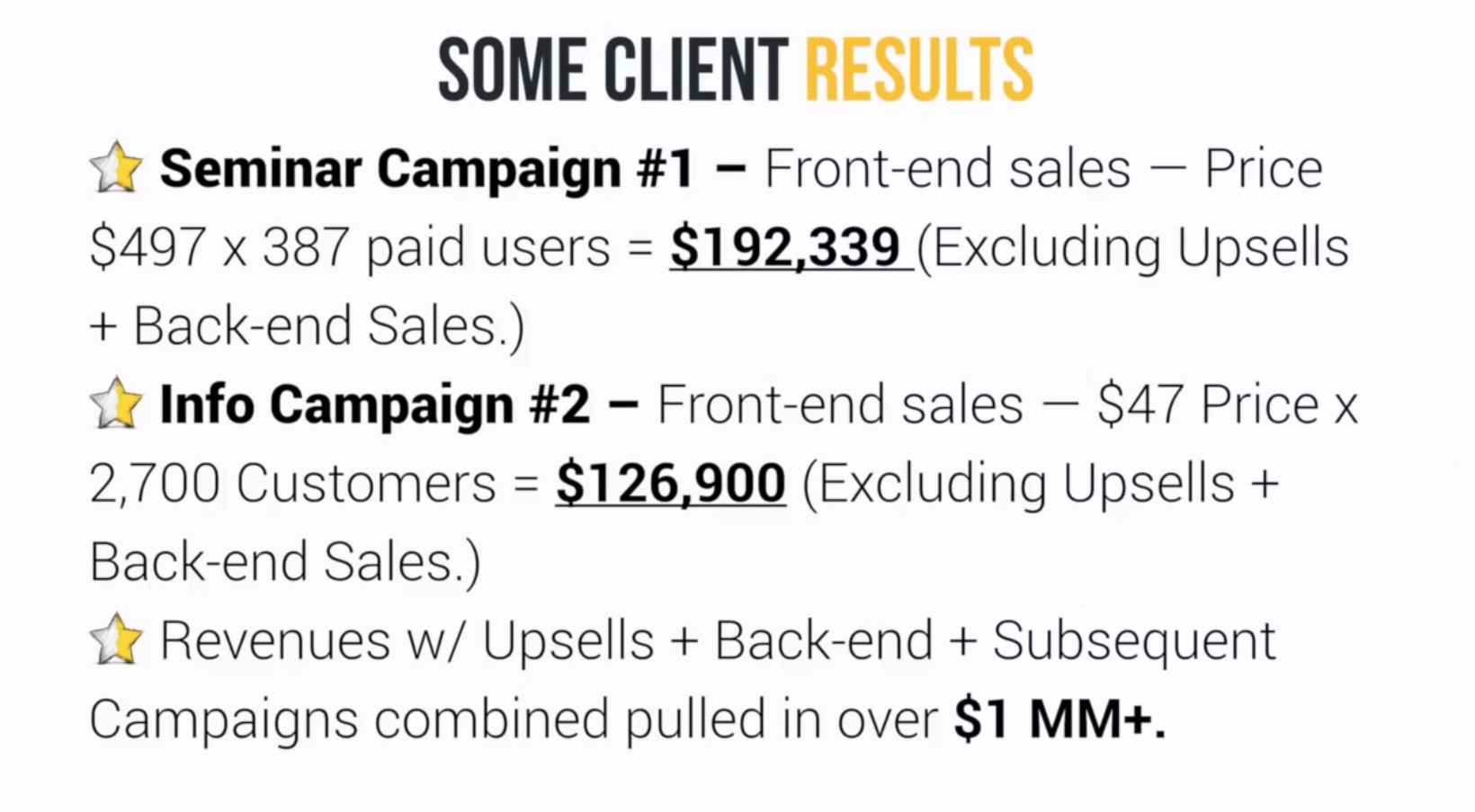
Now present an exclusive, time-bound offer that aligns with the topic—think implementation packages, extended trials, or bonus templates.
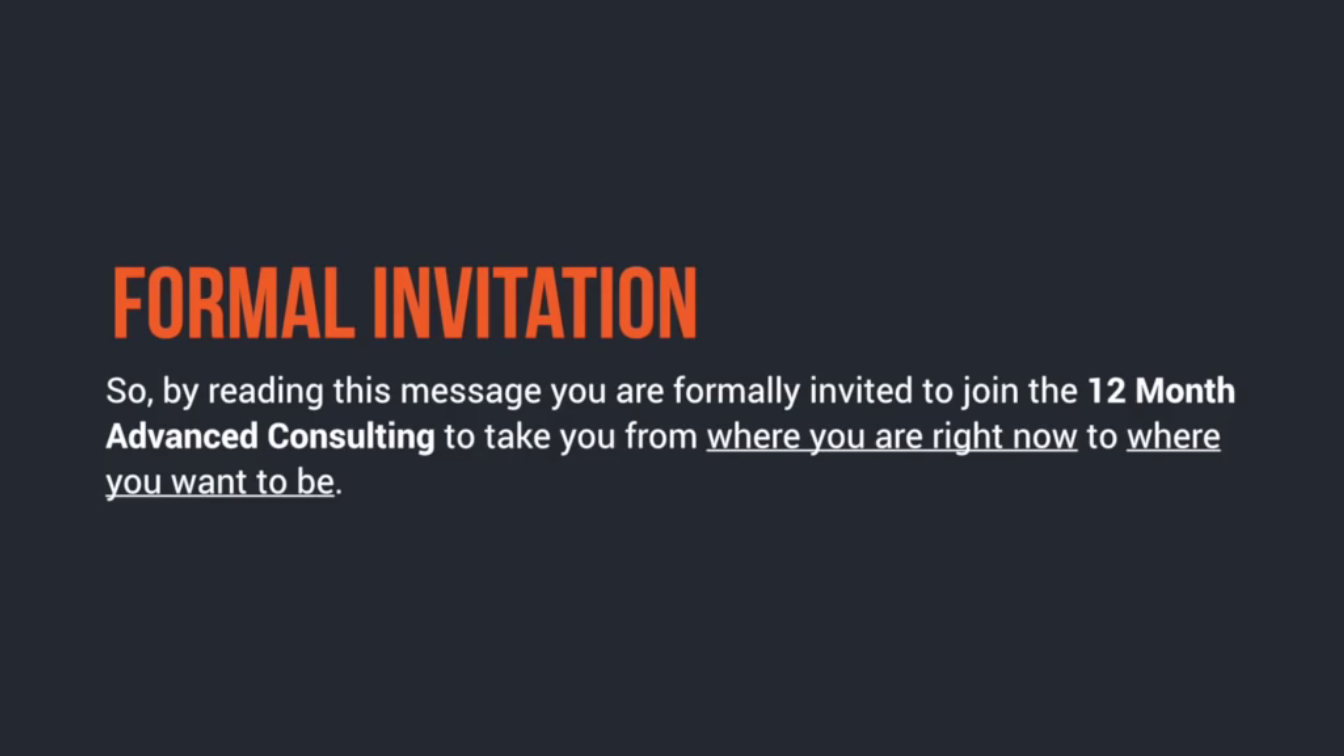
The closer the offer maps to the lesson, the higher your conversion rate.
Finish with Q&A. You can run Q&A before the offer, after it, or both—use it to remove objections and clarify next steps.
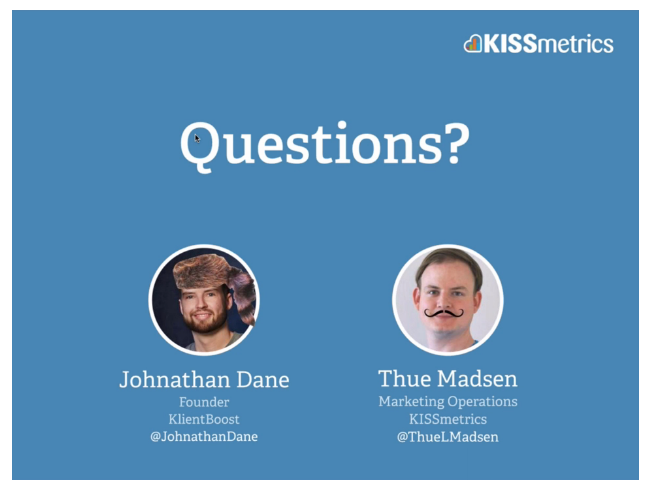
9. Get your product reviewed by influencers
One reason educational content often fails to sell: it doesn’t connect your product to the reader’s next step.
Say you sell coffee.
You publish “5 brewing mistakes you’re making.” Useful—but it doesn’t naturally bridge to buying your beans.
That’s fine for awareness. But some content should create direct purchase intent. Independent product reviews do exactly that.
Reviews are most persuasive when they come from credible third parties—not you.
So your job is to identify creators and journalists who review products your audience already considers—and pitch them.
How to find creators who’ll review your product:
Build a list of writers and sites whose readers match your buyers. Continuing our example, imagine you launched a new time-management tool.
Start by Googling “top (product type)” to collect your competitive set.
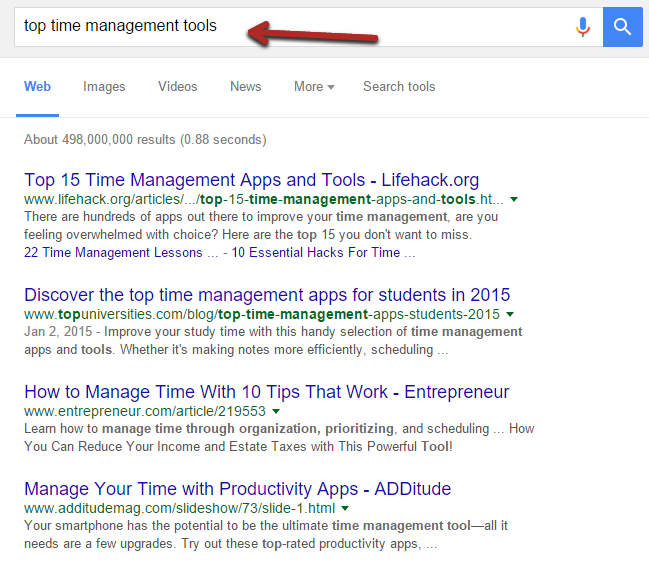
List every alternative on page one.
Next, search “(competitor name) review” for each to find outlets and authors who already write these reviews.
Capture names, emails, and links.
Big outlets are fantastic—but hard to land without momentum.
Unless your product is truly novel, start smaller and earn your way up with social proof.
How to maximize your chances:
From scratch, focus on approachable blogs and niche publications first. They’re more responsive and can drive meaningful, early sales.
Smaller blogs often have tight, trusting audiences. A single positive review can outperform impressions on a larger site.
Here’s a simple outreach template you can adapt:
Subject: Content idea for (blog name)
Hi (name),
I enjoyed your (competitor tool) review—especially your take on (specific point).
I’d love to offer you free access to our tool, (product name). It’s similar in purpose, but (specific differentiator the audience cares about).
If you’re open to trying it or have questions, I’m happy to help.
Thanks for the great work,
Your name.
Notice three elements:
- Clear differentiator — Relate to a tool they’ve covered, then explain what you do better. Specifics beat vague claims.
- Real incentive — Offer complimentary access or a sample; you’re asking for their time.
- No pressure — Don’t demand a review. Great products earn them.
Send a high volume of tailored outreach to long-tail sites first.
You won’t get every yes, but you’ll land enough to build momentum and quotes.
Then move upmarket. As you pitch mid-tier outlets, include credible logos and links to existing coverage.
When you reach the top results, you’ll have the social proof editors look for.
Expect this campaign to take months. The good news: early wins can produce ongoing sales while you climb.
10. Design an email sales funnel
Email is still the most reliable owned channel for selling. People expect action in the inbox—replying, clicking, or purchasing.
That behavior—and your ability to sequence messages—makes email the highest-ROI channel for most teams.
If you’re investing in content, you need an email platform to capture, nurture, and convert that attention. You don’t have to start expensive—most providers offer entry tiers or trials—just start structured.
Budget for sending costs as you grow, and standardize your cadence: new content announcements, webinar invites, and automated drip sequences tied to user intent.
Publishing one to two quality pieces a day and a few strong visuals per month is plenty—what matters is mapping each email to a clear next step.
The result: consistent, compounding traffic and sales from owned audiences.
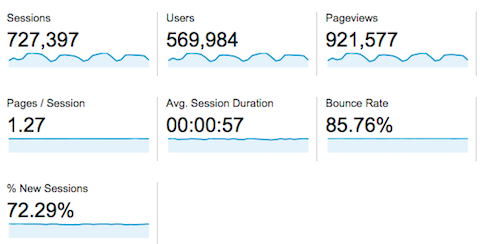
How to get sales through emails:
Blasting “buy now” rarely works. Instead, build a connected series that educates first, then introduces your product as the logical solution.
Treat your sequence like a mini funnel: awareness > problem clarity > solution > offer.
A structured sequence looks like this:
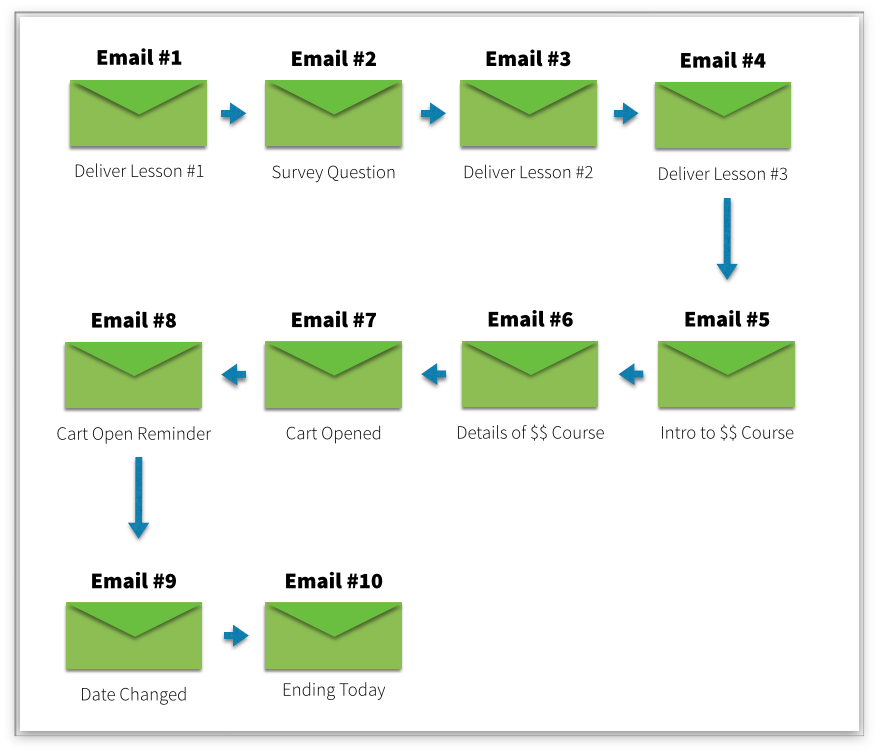
It works because each email moves the subscriber one step closer to a confident decision.
Your sequence can be three emails or twenty—length depends on product complexity, price, and audience sophistication.
Include at least these three layers, in order:
- Educational (first 1–5 emails) — Teach the problem space and success criteria. If you sell premium coffee, email about health benefits, flavor science, and how to recognize quality.
- Product introduction (1–2 emails) — Present your solution within that context. No hard sell—just clear, helpful positioning and proof.
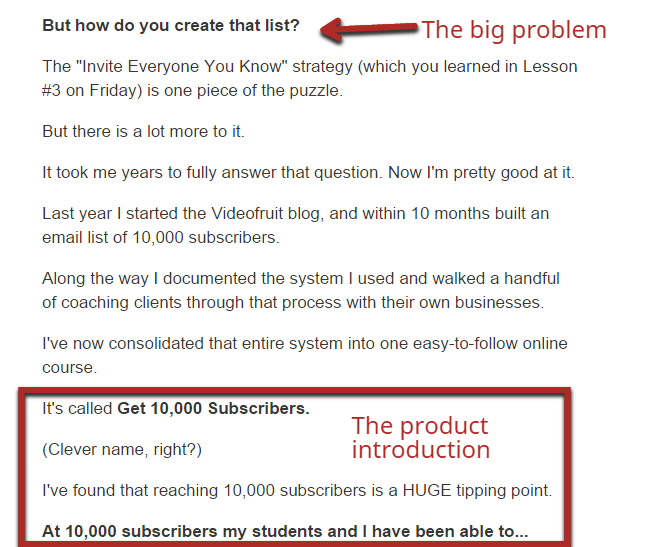
3. Product offer (last 1–5 emails) — Share a time-bound incentive or bonus. Scarcity and specificity drive action—especially for launches and cohorts.

Add at least one “thank-you and what’s next” email for new customers to reinforce value and increase retention. Treat the entire sequence as one narrative that steadily reduces risk and clarifies the next step.
11. Use content to get access to your target audience
Most people aren’t in a buying mindset while reading a blog post.
Same for social posts, YouTube videos, and slide decks. They’re discovery and education channels—not checkout pages.
Use these channels to earn attention and then convert that attention into subscribers. Email is where selling scales.
Option #1 — Start with blogging: We love blogging because it compounds. We’ve built multiple seven-figure businesses primarily through consistent, useful posts.
We rarely pitch in the post itself. Instead, every post gives readers an easy way to subscribe for more.
If you don’t have high-converting on-page signup forms yet, fix that now.
Option #2 — Social media with a single goal: Direct selling on social rarely works. Instead, use social to drive to a post or landing page that offers a compelling lead magnet.
A tweet or post to a sales page won’t convert cold scrollers. A post to a valuable resource with a clear opt-in will.
Some platforms also support embedded signup experiences or integrations with your email tool—use them where they fit your audience.
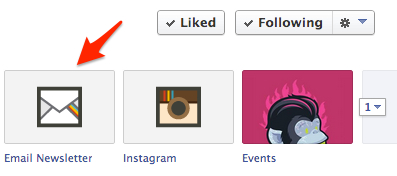
Otherwise, link to content and make sure that page includes an offer your audience actually wants.
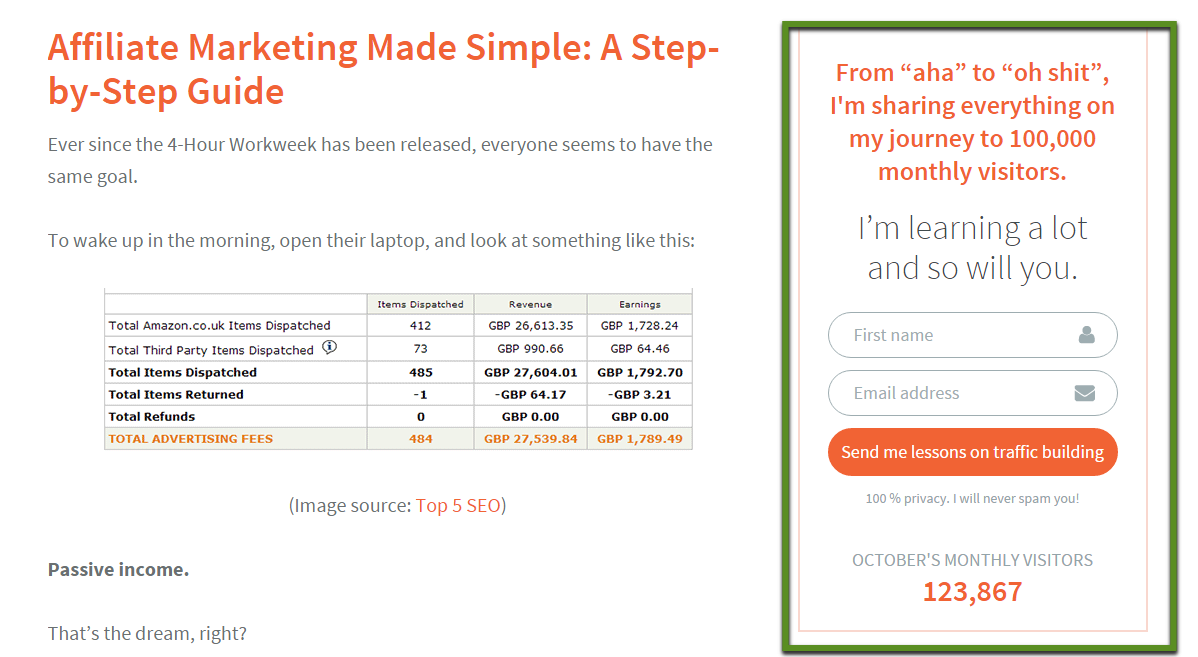
Option #3 — Slideshows and videos: Beyond your blog and social, SlideShare and similar platforms can expand reach dramatically.
Slide decks can deliver tens of thousands of targeted views when a presentation resonates.
Always include a final-slide CTA and a link in the description pointing to a landing page with a relevant download.

YouTube works the same way: consistent, helpful videos earn views and subscribers. Use descriptions and pinned comments to drive viewers to your best lead magnets.
If a video breaks out, be ready—update the description with your strongest CTA and a clean, trackable link.
Always point back to your site, where you control the experience and the conversion.
12. Focus on the types of blog content that convert
Not every blog post drives sales—but some formats consistently do.
If you want purchases from the blog itself, publish more of these.
Content type #1 — Tutorials: Two flavors convert well.
First, deep product walkthroughs that show readers exactly how to use a specific tool to accomplish a valuable task.
We did this in our advanced link building guide by detailing how to put ScrapeBox to work.

Don’t just describe features—show a repeatable, step-by-step process with outcomes.

In that example, we walked readers through finding proxies and building links—so they could get results today.
This format works best when the product is recognized or has search demand; it also suits affiliate monetization.
Second, outcome-driven tutorials where your product is a key step among several. You teach the broader job-to-be-done, then naturally include your tool.
Creators often do this in guest posts by showing exactly where their product fits into a larger workflow—so the reader sees the tool at the moment it removes friction.
Content type #2 — Product reviews: A rigorous, honest review can tip fence-sitters into buyers.
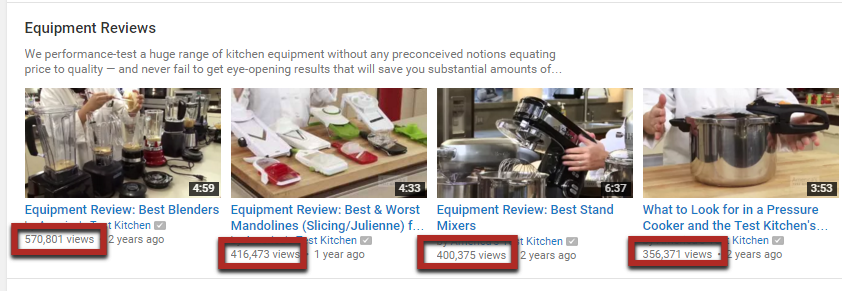
Most reviews fail—they’re biased, thin, and light on real usage.
Good reviews are transparent, experience-based, and include scenarios where the product is not the best fit.
Use this four-step approach:
- Pick a product category in your niche (e.g., link-building tools).
- Buy and test the products you’ll compare so your review is credible.
- Measure performance for the actual job each tool is hired to do.
- Quantify results and publish a detailed, data-driven review.
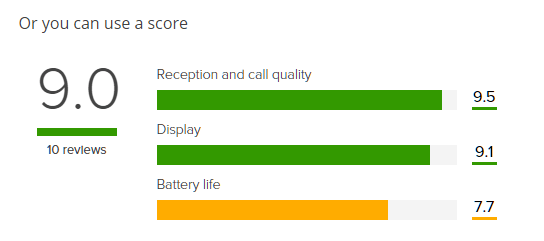
Content type #3 — Case studies: Long-form success stories prove fit for complex or high-consideration products.
Detail the exact steps a customer took, the obstacles they faced, the metrics that moved, and the timeline to results.
They’re ideal when prospects wonder, “Will this work for a company like mine?”
That’s why companies like HubSpot publish a steady stream of case studies—they remove uncertainty.
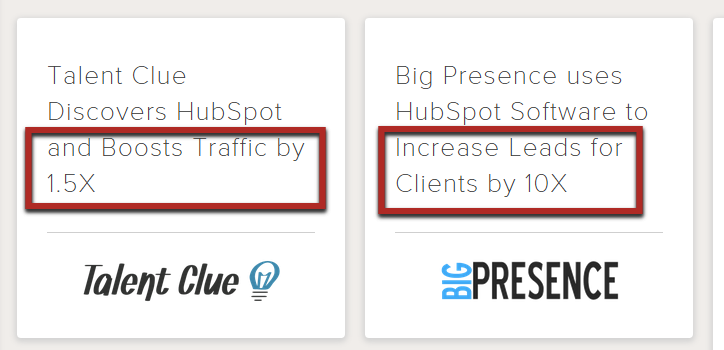
To write effective case studies, secure permission, co-create with the customer, include screenshots or photos where possible, and anchor the story in clear before/after metrics.
Conclusion
Content marketing remains one of the highest-leverage growth engines available today.
But the goal isn’t traffic for traffic’s sake—it’s turning attention into revenue.
Make your content relevant to buying decisions. Align assets to the funnel, especially BoFu.
Map the customer journey beyond purchase so content drives retention and expansion—not just acquisition.
Track rigorously with UTMs, test creative across social, and invest where content proves it can sell.
Use personas to sharpen messages, and prioritize formats that convert—tutorials, reviews, and case studies—supported by webinars and email sequences that educate first and offer second.
Stay current on trends so your perspective is timely and your product is the obvious next step.
Follow these steps to make your content genuinely helpful and measurably effective—and your sales numbers will show it.
